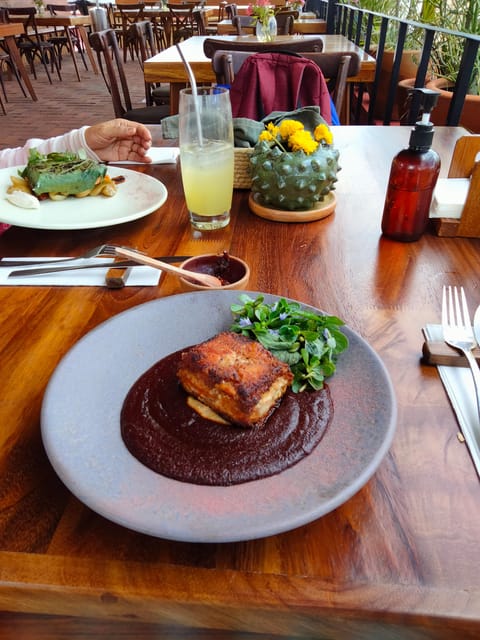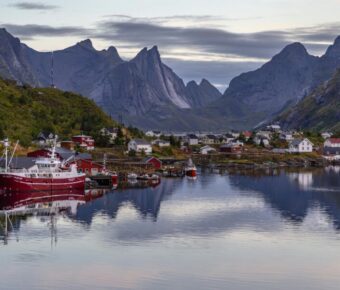
New Zealand Trip Cost From USA: 10 Days Under $3000
Planning a trip to New Zealand from the USA? You’re in for an amazing adventure, but you might be wondering about the cost. New Zealand’s stunning landscapes and unique experiences come with a price tag, but with some smart planning, you can make it work for your budget. A typical one-week trip to New Zealand for two people costs around $5,300, including flights, accommodation, food, and activities.
This beautiful country offers something for everyone, from breathtaking mountains and pristine beaches to vibrant cities and rich Maori culture. Your New Zealand journey can be tailored to fit different budgets, whether you’re looking for a backpacking adventure or a luxury getaway.
When budgeting for your trip, keep in mind that flights from the USA are a big expense, often ranging from $1,000 to $1,500 per person. Accommodation costs vary widely, from budget-friendly hostels to high-end resorts. Food, transportation, and activities will also factor into your total expenses.
Contents
- Key Takeaways
- Understanding New Zealand Trip Costs
- Cost Components of a New Zealand Trip
- Budgeting for Your Travel Style
- Flights to New Zealand
- Choosing Airlines and Tickets
- Finding the Best Deals on Flights
- Accommodation in New Zealand
- Options for Every Budget
- Booking Tips and Tricks
- Transportation within New Zealand
- Rentals and Public Transport
- Cost-Effective Travel Routes
- Food and Dining Expenses
- Eating on a Budget
- Fine Dining and Local Delicacies
- Activities and Sightseeing
- Natural Attractions and Museums
- Extreme Sports and Adventures
- Travel Tips and Advisories
- Weather and Best Time to Visit
- Cultural Etiquette and Practices
- Travel Styles and Accommodating Budgets
- Catering to Budget Travelers
- Options for Luxury Experiences
- More Travel Guides
Key Takeaways
- A week-long trip for two typically costs around $5,300 including flights and expenses
- Flights from the USA are a major expense, usually $1,000-$1,500 per person
- Costs can vary greatly based on travel style and chosen activities
Understanding New Zealand Trip Costs
Planning a trip to New Zealand from the USA takes some careful budgeting. Let’s break down the main expenses you’ll face and how to plan for different travel styles.
Cost Components of a New Zealand Trip
Your biggest expenses will be flights, accommodation, and transportation. Expect to pay $1,000-$1,500 for a round-trip flight from the US to New Zealand. For lodging, budget $50-$200 per night depending on your preferences.
Food costs can vary widely. Eating out might run $15-$30 per meal, while cooking for yourself can save money. Grocery prices are similar to the US.
Activities are a major part of any New Zealand trip. Many natural attractions are free, but guided tours and adventure activities can add up quickly. Set aside $50-$200 per day for activities and entrance fees.
Budgeting for Your Travel Style
If you’re a budget traveler, you can get by on $100-$150 per day. This means staying in hostels, cooking most meals, and focusing on free activities.
Mid-range travelers should plan for $200-$300 daily. This covers nice hotels, some restaurant meals, and a mix of paid and free activities.
For luxury travel, budget $400+ per day. This allows for high-end hotels, fine dining, and splurging on experiences like helicopter tours or wine tastings.
Remember to factor in transportation costs. Renting a car gives you freedom but can cost $40-$100 per day plus gas. Public transport is cheaper but less flexible.
Flights to New Zealand

Getting to New Zealand from the USA involves a long-haul flight across the Pacific. Prices and options vary widely depending on your departure city, travel dates, and airline choice.
Choosing Airlines and Tickets
Air New Zealand offers direct flights from several US cities to Auckland. They’re known for comfy seats and great service, but tickets can be pricey. United Airlines also flies direct from San Francisco, often at lower rates. For budget travelers, consider connecting flights on airlines like Fiji Airways or Hawaiian Airlines.
When picking your ticket, think about comfort for the long flight. Premium Economy gives extra legroom without the Business Class price tag. If you’ve got miles or want to splurge, Business Class makes the journey much nicer with lie-flat beds.
Finding the Best Deals on Flights
To save money, be flexible with your travel dates. Flights in September are usually cheaper than the peak season in December. Use flight comparison tools to check prices across different airlines and dates. Set up price alerts to catch good deals when they pop up.
Look for sales and promotions, especially from Air New Zealand and United. Sometimes booking separate tickets to Los Angeles or San Francisco, then to Auckland, can save cash. Just leave plenty of time between flights.
Don’t forget to factor in baggage fees and seat selection costs when comparing prices. A slightly pricier ticket might actually be cheaper overall if it includes these extras.
Accommodation in New Zealand

New Zealand offers a diverse range of places to stay, from budget-friendly hostels to luxurious resorts. You’ll find options to suit every taste and wallet across the country’s stunning landscapes.
Options for Every Budget
If you’re watching your pennies, hostels are a great choice. These budget-friendly spots often have dorm rooms and shared kitchens. Prices start around NZ$25-40 per night. For a bit more privacy, motels and budget hotels offer basic rooms from NZ$80-120.
Mid-range hotels typically cost NZ$150-250 per night. They usually have comfy rooms and some amenities like pools or restaurants. If you’re after luxury, high-end resorts and boutique lodges can set you back NZ$300-1000+ per night.
Want a home-like feel? Vacation rentals are popular in NZ. You can rent anything from a cozy apartment to a sprawling beach house. Prices vary widely but expect to pay NZ$100-500 per night depending on size and location.
Booking Tips and Tricks
Book early for the best deals, especially during peak season (December to February). Prices can double or triple then! Consider staying in less touristy areas to save cash. Many accommodations offer discounts for longer stays.
Don’t forget to check for package deals that include tours or car rentals. These can save you a bundle. And if you’re flexible, last-minute bookings sometimes snag great discounts. Just be aware this can be risky in busy periods.
Sign up for loyalty programs if you’re a frequent traveler. Even small B&Bs often have perks for repeat guests. And don’t be shy about asking for upgrades or discounts – Kiwis are friendly and might just say yes!
Transportation within New Zealand

Getting around New Zealand can be done in various ways to suit different budgets and preferences. You’ll find options ranging from affordable public transport to flexible car rentals.
Rentals and Public Transport
Renting a car gives you the most freedom to explore New Zealand at your own pace. Car rental prices typically range from $40 to $100 per day. You can compare rental deals from different companies to find the best rates. Campervans are another popular choice, letting you save on accommodation costs.
Public buses connect major cities and towns, offering a budget-friendly option. InterCity operates nationwide services with fares starting around $20 for shorter trips. In cities like Auckland and Wellington, local buses, trains, and ferries make getting around easy and cheap.
Cost-Effective Travel Routes
Flying can be a quick way to cover long distances, especially between the North and South Islands. Book in advance to snag deals, with one-way fares sometimes as low as $50-$100. Air New Zealand and Jetstar are the main domestic carriers.
For scenic and wallet-friendly travel, consider taking the ferry between islands. The journey from Wellington to Picton costs about $55-$75 per person. Once on either island, mix and match transport options. Use buses for longer routes and rent a car for exploring specific regions to keep costs down.
Food and Dining Expenses

Eating in New Zealand can range from budget-friendly to splurge-worthy. You’ll find tasty options to suit any wallet, from quick bites to fancy meals showcasing local ingredients.
Eating on a Budget
You can save big on food costs by shopping at supermarkets and cooking your own meals. A week’s worth of basic groceries runs about $50-70 NZD per person. For cheap eats out, hit up food courts, cafes, and takeaway spots. Fish and chips shops are a Kiwi classic – expect to pay $8-12 NZD for a hearty portion. Food trucks and markets offer yummy street eats for $8-15 NZD. Fast food combos cost around $12-15 NZD.
Many hostels and holiday parks have shared kitchens, so you can whip up your own meals. Grabbing picnic supplies and eating al fresco is another money-saving trick. You’ll find lots of scenic spots to enjoy your spread.
Fine Dining and Local Delicacies
Ready to treat yourself? New Zealand’s fine dining scene showcases fresh local ingredients. A nice sit-down dinner at a good restaurant runs $30-50 NZD per main course. Splurge on a tasting menu for $100-200+ NZD per person.
Must-try local specialties include green-lipped mussels, lamb, and Bluff oysters. Sample Maori hangi, a traditional feast cooked in an underground oven. New Zealand’s wines are world-class – try a wine tasting for $15-25 NZD.
Cafes are big in NZ culture. Expect to pay $4-5 NZD for coffee and $12-18 NZD for brunch. Many offer all-day breakfast – perfect for a leisurely start to your day.
Activities and Sightseeing

New Zealand offers a wide range of exciting activities and breathtaking sights. You’ll find plenty of options to suit your interests and budget, from free natural wonders to thrilling adventures.
Natural Attractions and Museums
New Zealand’s stunning landscapes are a major draw. You can explore Fiordland National Park’s majestic fjords and mountains for free or with low-cost guided tours. The park’s famous Milford Sound is a must-see. Lakes like Tekapo and Wanaka offer gorgeous views and hiking trails.
Many museums have affordable entry fees. The Te Papa Museum in Wellington is free and gives you a great overview of Kiwi culture and history. The Auckland Museum charges about $25 NZD for adults.
Waiheke Island, near Auckland, is perfect for a day trip. You can enjoy its beaches, wineries, and art galleries. Ferry tickets cost around $40 NZD round-trip.
Extreme Sports and Adventures
Queenstown is New Zealand’s adventure capital. You’ll find tons of exciting activities here, from bungee jumping to skydiving. Prices vary:
- Bungee jumping: $150-$300 NZD
- Skydiving: $300-$500 NZD
- Jet boating: $100-$150 NZD
For a cheaper thrill, try luging in Rotorua or Queenstown. It costs about $40-$50 NZD for several rides.
Skiing is popular in winter. A day pass at major resorts costs $100-$150 NZD. You can save by visiting smaller ski fields or going during shoulder season.
White water rafting is another popular activity. Expect to pay $100-$200 NZD for a half-day trip. It’s a great way to experience New Zealand’s rivers and canyons.
Travel Tips and Advisories

New Zealand offers unique experiences, but planning is key. Here are some essential tips to make your trip smoother and more enjoyable.
Weather and Best Time to Visit
New Zealand’s seasons are opposite to the USA. Summer runs from December to February, while winter is June to August. The best time to visit depends on what you want to do.
Summer is great for beaches and outdoor activities. It’s warm and sunny, perfect for hiking and swimming. But it’s also peak tourist season, so prices are higher.
Winter is ideal for skiing and snowboarding in the South Island. It’s colder, but you’ll find cheaper deals on flights and accommodation.
Spring (September to November) and fall (March to May) are good middle-ground options. The weather is mild, and there are fewer tourists.
Cultural Etiquette and Practices
Maori culture is a big part of New Zealand. It’s polite to learn a few basic Maori words like “kia ora” (hello) and “ka kite” (see you later).
Take off your shoes when entering someone’s home. It’s a common practice in New Zealand.
Tipping isn’t expected in restaurants or taxis. Good service is standard, and staff are paid fair wages.
Be eco-friendly. New Zealand values its clean, green image. Use reusable bags and water bottles. Don’t litter.
Respect nature. Stay on marked trails when hiking. Don’t feed wild animals.
Remember, New Zealanders (Kiwis) are friendly and laid-back. They appreciate visitors who are polite and respect their customs.
Travel Styles and Accommodating Budgets

New Zealand offers options for every type of traveler and budget. You can find ways to save money or splurge on luxury experiences.
Catering to Budget Travelers
If you’re watching your wallet, New Zealand has plenty of budget-friendly choices. Hostels are cheap and social, often costing $20-30 per night for a dorm bed. You can cook meals in shared kitchens to save on food costs. Camping is another wallet-friendly option, with sites around $10-15 per person.
For getting around, consider buying a used campervan. This gives you transport and a place to sleep. Many backpackers buy vans when they arrive and sell them before leaving. Bus passes are also budget-friendly for hopping between cities and towns.
To keep activity costs down, take advantage of New Zealand’s free natural attractions. Hike in national parks, relax on beaches, and enjoy scenic drives. Look for free walking tours in major cities too.
Options for Luxury Experiences
If you want to splurge, New Zealand has amazing luxury experiences. High-end lodges with stunning views are available, and they often cost $500 or more per night. Many lodges include gourmet meals, spa treatments, and activities.
For a special splurge, you can book a scenic flight over Milford Sound or a heli-wine tour in Marlborough. Prices often start around $400-500 per person. Private guides can also customize luxury itineraries with exclusive experiences.
Fine dining is another way to treat yourself. Try award-winning restaurants in Auckland and Wellington. A tasting menu with wine pairings can easily run $200 or more per person. For a unique luxury stay, consider booking a private villa or yacht charter.



